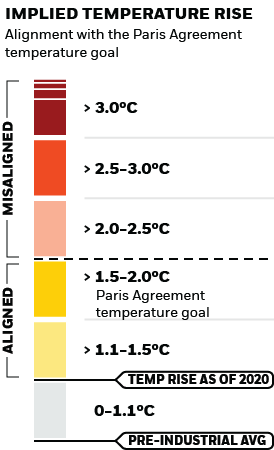BTHM
BlackRock Future U.S. Themes ETF ACTIVE
-
Fees as stated in the prospectus
Expense Ratio: 0.60%
Overview

Performance
Performance
Growth of Hypothetical $10,000
Distributions
| Record Date | Ex-Date | Payable Date |
|---|
Premium/Discount
-
Returns
| 1y | 3y | 5y | 10y | Incept. | |
|---|---|---|---|---|---|
| Total Return (%) | 28.86 | - | - | - | 9.93 |
| Market Price (%) | 28.82 | - | - | - | 9.93 |
| Benchmark (%) | 24.56 | - | - | - | 8.36 |
| After Tax Pre-Liq. (%) | 28.74 | - | - | - | 9.76 |
| After Tax Post-Liq. (%) | 17.14 | - | - | - | 7.65 |
| YTD | 1m | 3m | 6m | 1y | 3y | 5y | 10y | Incept. | |
|---|---|---|---|---|---|---|---|---|---|
| Total Return (%) | 21.29 | 3.76 | 5.94 | 21.29 | 28.86 | - | - | - | 27.23 |
| Market Price (%) | 21.31 | 3.90 | 5.92 | 21.31 | 28.82 | - | - | - | 27.25 |
| Benchmark (%) | 15.29 | 3.59 | 4.28 | 15.29 | 24.56 | - | - | - | 22.69 |
| After Tax Pre-Liq. (%) | 21.26 | 3.75 | 5.93 | 21.26 | 28.74 | - | - | - | 26.76 |
| After Tax Post-Liq. (%) | 12.62 | 2.23 | 3.53 | 12.62 | 17.14 | - | - | - | 20.64 |
| 2019 | 2020 | 2021 | 2022 | 2023 | |
|---|---|---|---|---|---|
| Total Return (%) | - | - | - | -17.79 | 24.35 |
| Market Price (%) | - | - | - | -17.84 | 24.41 |
| Benchmark (%) | - | - | - | -18.11 | 26.29 |
PROFESSIONAL EXPERTISE. EASY ACCESS.
ACTIVE ETFs: THE NEXT FRONTIER IN INVESTOR INNOVATION
Access an innovative way to invest and pursue your financial goals with Active ETFs
Key Facts
Key Facts
Portfolio Characteristics
Portfolio Characteristics
Sustainability Characteristics
Sustainability Characteristics
Sustainability Characteristics provide investors with specific non-traditional metrics. Alongside other metrics and information, these enable investors to evaluate funds on certain environmental, social and governance characteristics. Sustainability Characteristics do not provide an indication of current or future performance nor do they represent the potential risk and reward profile of a fund. They are provided for transparency and for information purposes only. Sustainability Characteristics should not be considered solely or in isolation, but instead are one type of information that investors may wish to consider when assessing a fund. Learn more
This fund does not seek to follow a sustainable, impact or ESG investment strategy. The metrics do not change the fund’s investment objective or constrain the fund’s investable universe, and there is no indication that a sustainable, impact or ESG investment strategy will be adopted by the fund. For more information regarding the fund's investment strategy, please see the fund's prospectus.
Review the MSCI methodologies behind Sustainability Characteristics using the links below.
To be included in MSCI ESG Fund Ratings, 65% (or 50% for bond funds and money market funds) of the fund’s gross weight must come from securities with ESG coverage by MSCI ESG Research (certain cash positions and other asset types deemed not relevant for ESG analysis by MSCI are removed prior to calculating a fund’s gross weight; the absolute values of short positions are included but treated as uncovered), the fund’s holdings date must be less than one year old, and the fund must have at least ten securities.
Business Involvement
Business Involvement
Business Involvement metrics can help investors gain a more comprehensive view of specific activities in which a fund may be exposed through its investments.
Business Involvement metrics are not indicative of a fund’s investment objective, and, unless otherwise stated in fund documentation and included within a fund’s investment objective, do not change a fund’s investment objective or constrain the fund’s investable universe. For more information regarding a fund's investment strategy, please see the fund's prospectus.
Review the MSCI methodology behind the Business Involvement metrics, using links below.
Business Involvement metrics are calculated by BlackRock using data from MSCI ESG Research which provides a profile of each company’s specific business involvement. BlackRock leverages this data to provide a summed up view across holdings and translates it to a fund's market value exposure to the listed Business Involvement areas above.
Business Involvement metrics are designed only to identify companies where MSCI has conducted research and identified as having involvement in the covered activity. As a result, it is possible there is additional involvement in these covered activities where MSCI does not have coverage. This information should not be used to produce comprehensive lists of companies without involvement. Business Involvement metrics are only displayed if at least 1% of the fund’s gross weight includes securities covered by MSCI ESG Research.
ESG Integration
ESG Integration
ESG integration is the practice of incorporating financially material environmental, social and governance (ESG) data or information into the investment decision process with the objective of enhancing risk-adjusted returns of our clients’ portfolios. Unless otherwise stated in Fund documentation or included within the Fund's investment objective, inclusion of this statement does not imply that the Fund has an ESG-aligned investment objective or strategy, but rather describes how ESG data or information is considered as part of the overall investment process.
Fees
Fees
| Management Fee | 0.60% |
| Acquired Fund Fees and Expenses | 0.00% |
| Other Expenses | 0.00% |
| Expense Ratio | 0.60% |
The amounts shown above are as of the current prospectus, but may not include extraordinary expenses incurred by the Fund over the past fiscal year. Amounts are rounded to the nearest basis point, which in some cases may be "0.00".
Ratings
Ratings
Holdings
Holdings
| Ticker | Name | Sector | Asset Class | Market Value | Weight (%) | Notional Value | Shares | CUSIP | ISIN | SEDOL | Price | Location | Exchange | Currency | FX Rate | Accrual Date |
|---|
The values shown for “market value,” “weight,” and “notional value” (the “calculated values”) are based off of a price provided by a third-party pricing vendor for the portfolio holding and do not reflect the impact of systematic fair valuation (“the vendor price”). The vendor price is not necessarily the price at which the Fund values the portfolio holding for the purposes of determining its net asset value (the “valuation price”). Holdings data shown reflects the investment book of record, which may differ from the accounting book of record used for the purposes of determining the Net Assets of the Fund. Additionally, where applicable, foreign currency exchange rates with respect to the portfolio holdings denominated in non-U.S. currencies for the valuation price will be generally determined as of the close of business on the New York Stock Exchange, whereas for the vendor price will be generally determined as of 4 p.m. London. The calculated values may have been different if the valuation price were to have been used to calculate such values. The vendor price is as of the most recent date for which a price is available and may not necessarily be as of the date shown above.
Please see the “Determination of Net Asset Value” section of each Fund’s prospectus for additional information on the Fund’s valuation policies and procedures.
READY TO INVEST?
READY TO INVEST?
There are many ways to access iShares ETFs. Learn how you can add them to your portfolio.
Portfolio Managers
Portfolio Managers






